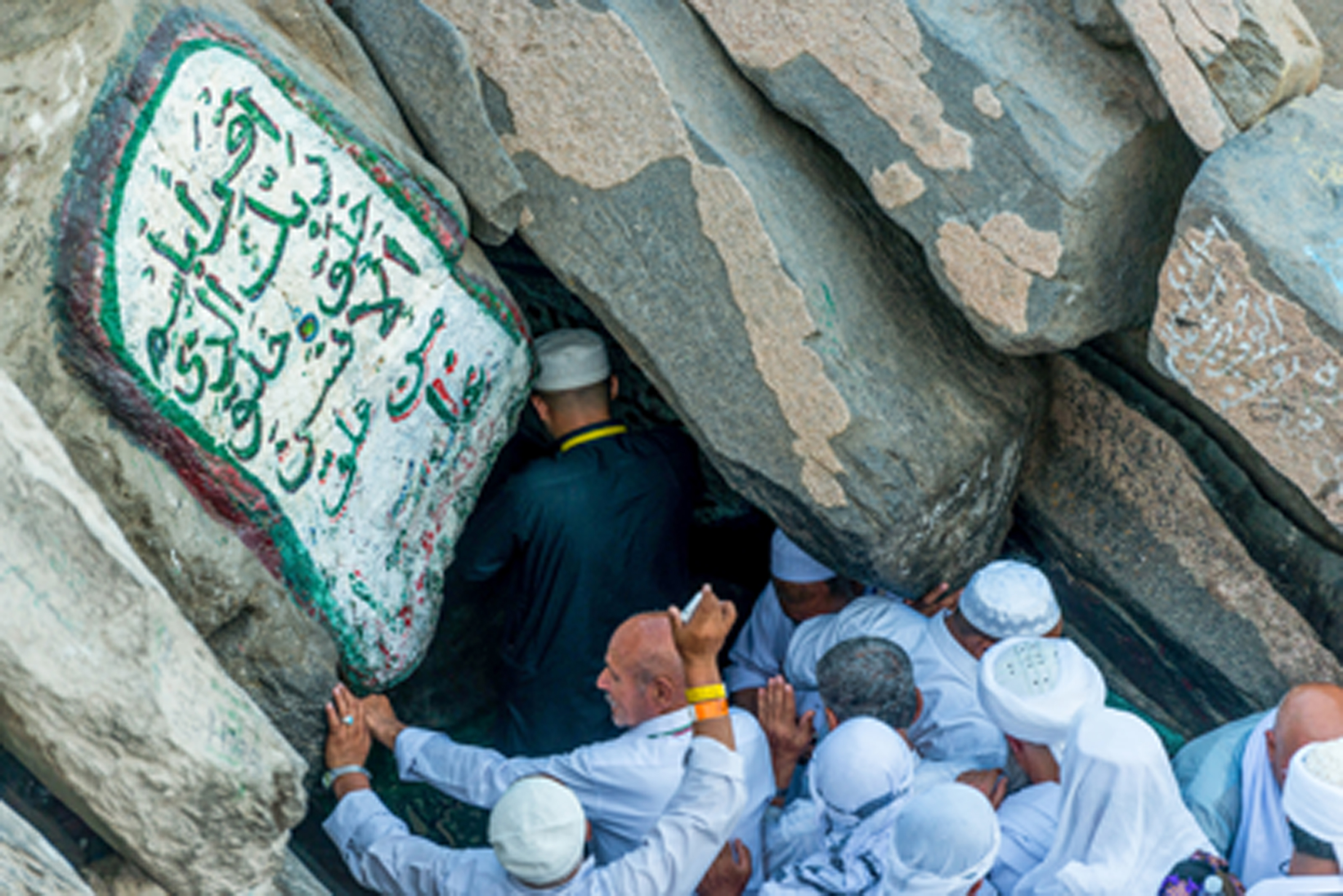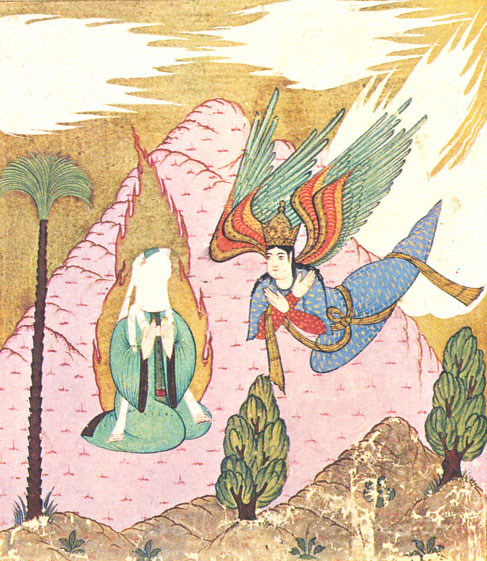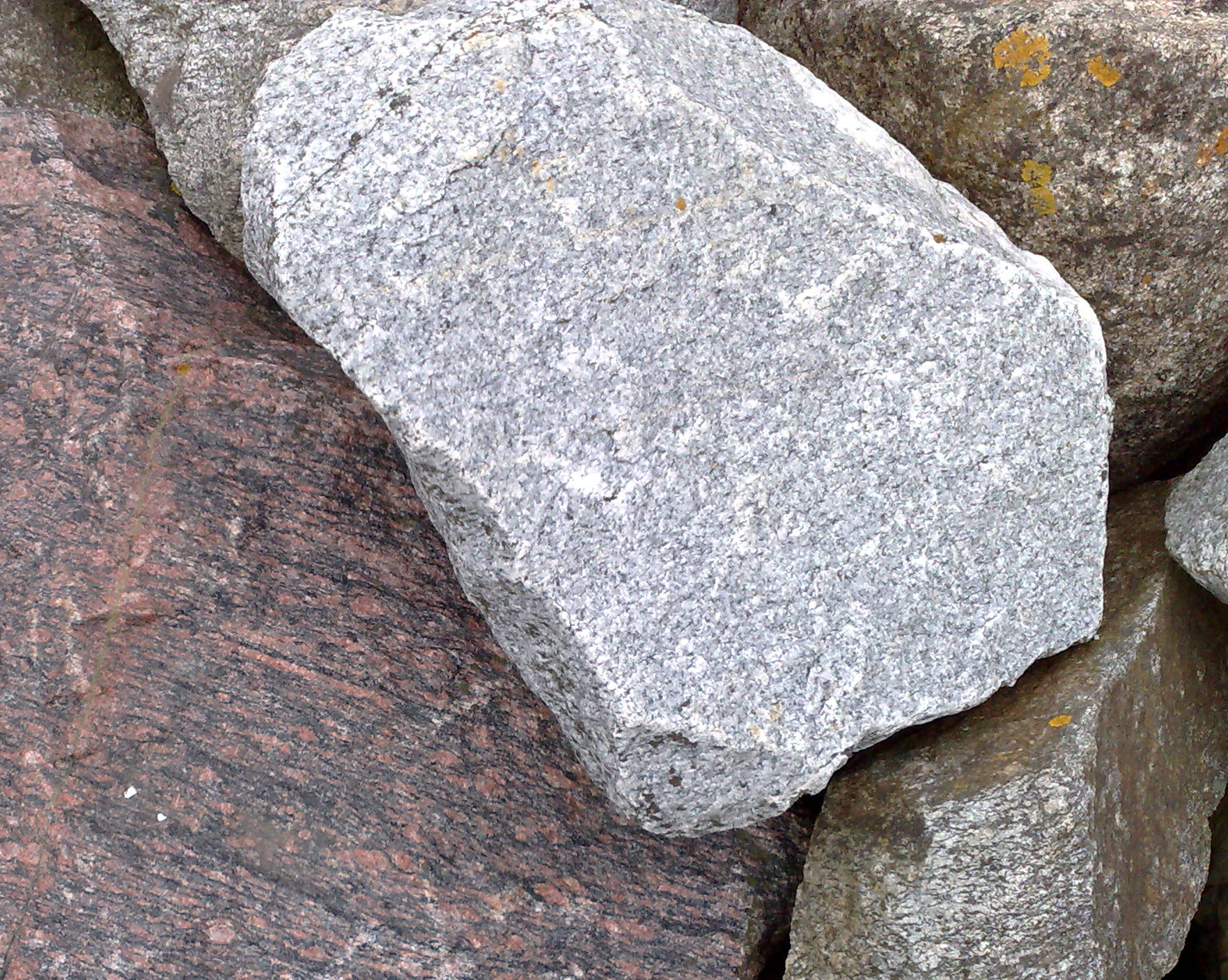|
Jabal Al-Nour
Jabal al-Nour ( or 'Hill of the Illumination') is a mountain near Mecca in the Hejaz region of Saudi Arabia. The mountain houses the Cave#Talus cave, grotto or cave of Hira (), which holds tremendous significance for Muslims throughout the world, as it is here where the Prophets and messengers in Islam, Islamic prophet Muhammad in Islam, Muhammad received his Muhammad's first revelation, first revelation of the Quran, which consisted of the first five Ayah, ayat of Al-Alaq, Surah Al-Alaq from the angel Gabriel in Islam, Jibra'il (as is pronounced in certain Qira'at, Quran recitation schools and some Arabs, Arab tribes; also known as Gabriel). It is one of the most popular tourist attractions in Makkah. The mountain itself is barely tall; nonetheless one to two hours are needed to make the strenuous hike to the cave. There are 1750 steps to the top which can take anywhere between half an hour and three hours. For Muslims, Jabal al-Nour represents a sacred place of profound signific ... [...More Info...] [...Related Items...] OR: [Wikipedia] [Google] [Baidu] |
Mecca
Mecca, officially Makkah al-Mukarramah, is the capital of Mecca Province in the Hejaz region of western Saudi Arabia; it is the Holiest sites in Islam, holiest city in Islam. It is inland from Jeddah on the Red Sea, in a narrow valley above sea level. Its metropolitan population in 2022 was 2.4million, making it the List of cities in Saudi Arabia by population, third-most populated city in Saudi Arabia after Riyadh and Jeddah. Around 44.5% of the population are Saudis, Saudi citizens and around 55.5% are Muslim world, Muslim foreigners from other countries. Pilgrims more than triple the population number every year during the Pilgrimage#Islam, pilgrimage, observed in the twelfth Islamic calendar, Hijri month of . With over 10.8 million international visitors in 2023, Mecca was one of the ten List of cities by international visitors, most visited cities in the world. Mecca is generally considered "the fountainhead and cradle of Islam". Mecca is revered in Islam as the birthp ... [...More Info...] [...Related Items...] OR: [Wikipedia] [Google] [Baidu] |
Gabriel
In the Abrahamic religions (Judaism, Christianity, Islam), Gabriel ( ) is an archangel with the power to announce God's will to mankind, as the messenger of God. He is mentioned in the Hebrew Bible, the New Testament and the Quran. Many Christian traditions – including Eastern Orthodoxy, Catholicism, Lutheranism, and Anglicanism – revere Gabriel as a saint. In the Hebrew Bible, Gabriel appears to the prophet Daniel (biblical figure), Daniel to explain his visions (Daniel 8:15–26, Daniel 9, 9:21–27). The archangel also appears in the Book of Enoch and other ancient Jewish writings not preserved in Hebrew. Alongside the archangel Michael (archangel), Michael, Gabriel is described as the guardian angel of the Israelites, people of History of ancient Israel and Judah, Israel, defending it against the angels of the other peoples. In the New Testament, the Gospel of Luke relates the Annunciation, in which the angel Gabriel appears to Zechariah (New Testament figur ... [...More Info...] [...Related Items...] OR: [Wikipedia] [Google] [Baidu] |
Granodiorite
Granodiorite ( ) is a coarse-grained (phaneritic) intrusive igneous rock similar to granite, but containing more plagioclase feldspar than orthoclase feldspar. The term banatite is sometimes used informally for various rocks ranging from granite to diorite, including granodiorite. The term ''granodiorite'' was first used by George F. Becker, G. F. Becker (1893) to describe granitic rocks in the Sierra Nevada, United States. Composition According to the QAPF diagram, granodiorite has a greater than 20% quartz by volume, and between 65% and 90% of the feldspar is plagioclase. A greater amount of plagioclase would designate the rock as tonalite. Granodiorite is felsic to intermediate composition, intermediate in composition. It is the Intrusive rock, intrusive igneous equivalent of the extrusive igneous dacite. It contains a large amount of sodium (Na) and calcium (Ca) rich plagioclase, potassium feldspar, quartz, and minor amounts of muscovite mica as the lighter colored miner ... [...More Info...] [...Related Items...] OR: [Wikipedia] [Google] [Baidu] |
Tonalite
Tonalite is an igneous rock, igneous, plutonic (Intrusive rock, intrusive) rock (geology), rock, of felsic composition, with phaneritic (coarse-grained) texture. Feldspar is present as plagioclase (typically oligoclase or andesine) with alkali feldspar making up less than 10% of the total feldspar content. Quartz (SiO2) is present as more than 20% of the total quartz-alkali feldspar-plagioclase-feldspathoid (QAPF classification, QAPF) content of the rock. Amphiboles and biotite are common in lesser quantities, while accessory minerals include apatite, magnetite and zircon. In older references tonalite is sometimes used as a synonym for quartz diorite. However the current IUGS QAPF diagram, classification defines tonalite as having greater than 20% quartz, while quartz diorite varies its quartz content from 5 to 20%. The name is derived from the type locality of tonalites, adjacent to the Tonale Line, a major structural lineament and mountain pass, Tonale Pass, in the Italy, Itali ... [...More Info...] [...Related Items...] OR: [Wikipedia] [Google] [Baidu] |
Hornblende
Hornblende is a complex silicate minerals#Inosilicates, inosilicate series of minerals. It is not a recognized mineral in its own right, but the name is used as a general or field term, to refer to a dark amphibole. Hornblende minerals are common in Igneous rock, igneous and metamorphic rocks. The general formula is . Physical properties Hornblende has a Mohs scale of mineral hardness, hardness of 5–6, a specific gravity of 3.0 to 3.6, and is typically an opaque green, dark green, brown, or black color. It tends to form slender prismatic to bladed crystals, diamond-shaped in cross section, or is present as irregular grains or fibrous masses. Its planes of cleavage (crystal), cleavage intersect at 56° and 124° angles. Hornblende is most often confused with the pyroxene series and biotite, biotite mica, which are also dark minerals found in granite and charnockite. Pyroxenes differ in their cleavage planes, which intersect at 87° and 93°. Hornblende is an inosilicate (cha ... [...More Info...] [...Related Items...] OR: [Wikipedia] [Google] [Baidu] |
Precambrian
The Precambrian ( ; or pre-Cambrian, sometimes abbreviated pC, or Cryptozoic) is the earliest part of Earth's history, set before the current Phanerozoic Eon. The Precambrian is so named because it preceded the Cambrian, the first period of the Phanerozoic Eon, which is named after Cambria, the Latinized name for Wales, where rocks from this age were first studied. The Precambrian accounts for 88% of the Earth's geologic time. The Precambrian is an informal unit of geologic time, subdivided into three eons ( Hadean, Archean, Proterozoic) of the geologic time scale. It spans from the formation of Earth about 4.6 billion years ago ( Ga) to the beginning of the Cambrian Period, about million years ago ( Ma), when hard-shelled creatures first appeared in abundance. Overview Relatively little is known about the Precambrian, despite it making up roughly seven-eighths of the Earth's history, and what is known has largely been discovered from the 1960s onwards. The Precambrian ... [...More Info...] [...Related Items...] OR: [Wikipedia] [Google] [Baidu] |
Intrusive Rock
Intrusive rock is formed when magma penetrates existing rock, crystallizes, and solidifies underground to form ''Igneous intrusion, intrusions'', such as batholiths, dike (geology), dikes, Sill (geology), sills, laccoliths, and volcanic necks.Intrusive RocksIntrusive rocks accessdate: March 27, 2017.Igneous intrusive rocks, accessdate: March 27, 2017.Britannica.comintrusive rock , geology , Britannica.com accessdate: March 27, 2017. Intrusion is one of the two ways igneous rock can form. The other is extrusive rock, extrusion, such as a Types of volcanic eruptions, volcanic eruption or similar event. An intrusion is any body of intrusive igneous rock, formed from magma that cools and solidifies within the crust of the planet. In contrast, an ''extrusion'' consists of extrusive rock, formed above the surface of the crust. Some geologists use the term plutonic rock synonymously with intrusive rock, but other geologists subdivide intrusive rock, by crystal size, into coarse-grai ... [...More Info...] [...Related Items...] OR: [Wikipedia] [Google] [Baidu] |
Brill Publishers
Brill Academic Publishers () is a Dutch international academic publisher of books, academic journals, and Bibliographic database, databases founded in 1683, making it one of the oldest publishing houses in the Netherlands. Founded in the South Holland city of Leiden, it maintains its headquarters there, while also operating offices in Boston, Paderborn, Vienna, Singapore, and Beijing. Since 1896, Brill has been a public limited company (). Brill is especially known for its work in subject areas such as Oriental studies, classics, religious studies, Jewish studies, Islamic studies, Asian studies, international law, and human rights. The publisher offers traditional print books, academic journals, primary source materials online, and publications on microform. In recent decades, Brill has expanded to Electronic publishing, digital publishing with ebooks and online resources including databases and specialty collections varying by discipline. History Founding by Luchtmans, 16 ... [...More Info...] [...Related Items...] OR: [Wikipedia] [Google] [Baidu] |
Encyclopedia Of Islam
The ''Encyclopaedia of Islam'' (''EI'') is a reference work that facilitates the academic study of Islam. It is published by Brill and provides information on various aspects of Islam and the Islamic world. It is considered to be the standard reference work in the field of Islamic studies. The first edition was published in 1913–1938, the second in 1954–2005, and the third was begun in 2007. Content According to Brill, the ''EI'' includes "articles on distinguished Muslims of every age and land, on tribes and dynasties, on the crafts and sciences, on political and religious institutions, on the geography, ethnography, flora and fauna of the various countries and on the history, topography and monuments of the major towns and cities. In its geographical and historical scope it encompasses the old Arabo-Islamic empire, the Islamic countries of Iran, Central Asia, the Indian sub-continent and Indonesia, the Ottoman Empire and all other Islamic countries". Reception ''EI ... [...More Info...] [...Related Items...] OR: [Wikipedia] [Google] [Baidu] |
Mina, Saudi Arabia
Mina (), nicknamed the "City of the Tents," is a valley located southeast of the city of Mecca, in the district of Masha'er, Mecca Province, Province of Makkah in the Hejazi region Saudi Arabia. Covering an area of approximately , Mina incorporates the tents, the area of ''Stoning of the Devil, Jamarat'', and the slaughterhouses just outside the tents. Mina is most famous for its role in the ''Hajj'' ("Pilgrimage"). To accommodate the pilgrims who stay in Mina over multiple nights in the month of Dhu al-Hijjah, more than 100,000 Air conditioning, air-conditioned tents have been built in the area, giving Mina the nickname "City of Tents." With a capacity of up to 3 million people, Mina has been called the largest tent city in the world. The three Jamarat, located in the Mina valley, are the location of the Jamarat, performed between sunrise and sunset in the final days of the Hajj. The stone throwing ritual commemorates the Prophets and messengers in Islam, Islamic prophet Abraham ... [...More Info...] [...Related Items...] OR: [Wikipedia] [Google] [Baidu] |
Kaaba
The Kaaba (), also spelled Kaba, Kabah or Kabah, sometimes referred to as al-Kaba al-Musharrafa (), is a stone building at the center of Islam's most important mosque and Holiest sites in Islam, holiest site, the Masjid al-Haram in Mecca, Saudi Arabia. It is considered by Muslims to be the ''Baytullah'' () and determines the qibla () for Muslims around the world. In Historiography of early Islam, early Islam, Muslims faced in the general direction of Al-Aqsa Mosque in Jerusalem as the qibla in their prayers before changing the direction to face the Kaaba, believed by Muslims to be a result of a Quranic verse revelation to Muhammad. According to Islam, the Kaaba was rebuilt several times throughout history, most famously by Abraham in Islam, Ibrahim and his son Ishmael in Islam, Ismail, when he returned to the valley of Mecca several years after leaving his wife Hagar in Islam, Hajar and Ismail there upon God in Islam, Allah's command. The current structure was built after th ... [...More Info...] [...Related Items...] OR: [Wikipedia] [Google] [Baidu] |
Qibla
The qibla () is the direction towards the Kaaba in the Great Mosque of Mecca, Sacred Mosque in Mecca, which is used by Muslims in various religious contexts, particularly the direction of prayer for the salah. In Islam, the Kaaba is believed to be a sacred site built by prophets Abraham in Islam, Abraham and Ishmael in Islam, Ishmael, and that its use as the qibla was ordained by God in several verses of the Quran revealed to Muhammad in the second Islamic calendar, Hijri year. Prior to this revelation, Muhammad and his followers in Medina faced Jerusalem for prayers. Most mosques contain a (a wall niche) that indicates the direction of the qibla. The qibla is also the direction for entering the (sacred state for the hajj pilgrimage); the direction to which animals are turned during (Islamic slaughter); the recommended direction to make (supplications); the direction to avoid when relieving oneself or spitting; and the direction to which the deceased are aligned when Islamic ... [...More Info...] [...Related Items...] OR: [Wikipedia] [Google] [Baidu] |










